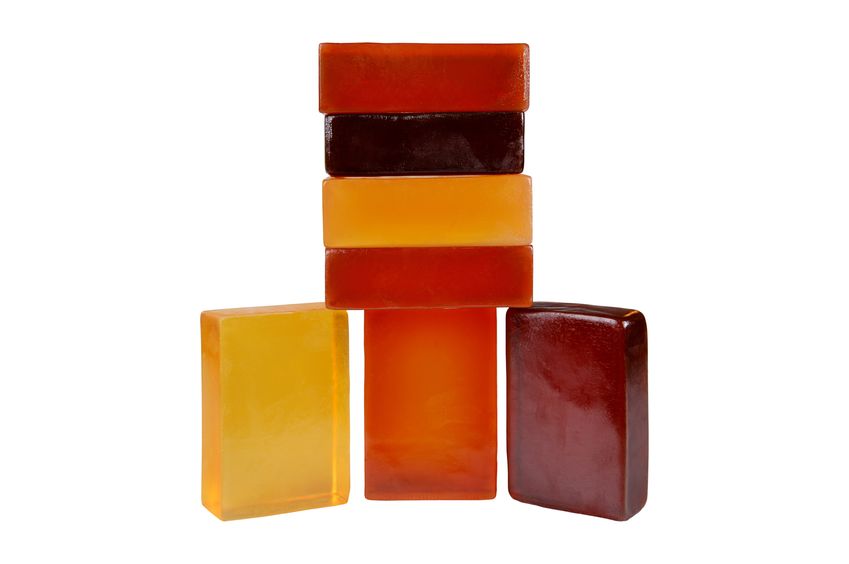Melt and pour soaps are a great stepping stone into more in depth soaping. They help to give you an idea of what type of ingredients you enjoy in soap as well as scent and color. They come in many different variations and allows you to customize your soap without lye and worrying if the recipe will turn out.
There are mutliple ways to melt the soap base:
- Microwave oven (50% power)
- For simplicity you can use a double boiler pan with hot water in between.
- Instructions for double boiler are similar to microwave.
Melting & Pouring Instructions
- Thinly slice, chunk or grate the soap base for ease of melting.
- Place the soap in a Pyrex cup and place it in the microwave for 30 seconds (for half a pound).
- Remove and stir slightly.
- Continue to microwave for another 30 seconds.
- Add soap colorant and stir until blended (soap colorant should be minimal).
- Add soap fragrance to the desired level, and stir gently and thoroughly.
- Pour soap into soap molds. Let cool and harden before popping out of molds.
- For fast set, allow the soap to cool for 10 minutes and place in refrigerator (not the freezer) until set.
Things to beware and ensure in processing the melt and pour soap base.
- Never allow the soap to boil. Boiling might denature the color and cause a yellowish hue. A small drop of violet color will restore your soap to white or clear color.
- Children require adult supervision, and should not handle alone the hot and molten soap.
- Ideally the soap temperature prior to pouring should be around 120 degrees. In other works you can put your finger in the soap and it shouldn’t hurt.
- Do not over stir when mixing colors and fragrances. But if this happens allow 10 minutes of settling for the release of air bubbles. Air bubbles if trapped in the mold will spoil the transparency.
- Always pour on a leveled surface.
- When placing an insert or an object in the soap, pour the first layer and let cool, insert the object, and when pouring the second layer it has to be higher in temperature up to 150 degrees. Otherwise separation of the two layers might occur.
- Avoid diluting the soap with water or any other chemical. The only exception to this is to add a maximum of 5% glycerine should you need a softer or more transparent soap.
- Avoid contact of soap with eyes.
